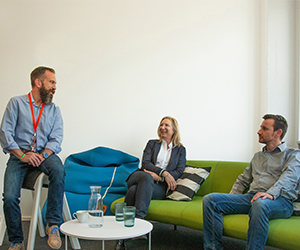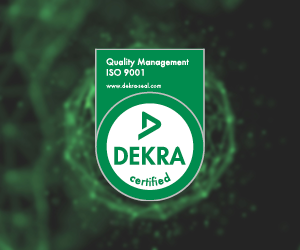
International Day of Families at HENSOLDT Cyber
International Day of Families at HENSOLDT Cyber Interview with Markus Wolf, Sascha Fedderwitz, Emilia Fries We asked some of our colleagues a few questions on

Building on our first video session in which we took a closer look at what exactly the TRENTOS SDK is comprised of, this second session will focus on how the required development environment of the SDK can be set up and how it can be used to build and run a TRENTOS® system based on the seL4© Microkernel.
Keeping with the “Hello World!” tradition
Every seasoned software developer knows that running a “Hello World!” program is traditionally the first step you take when learning any new language or getting familiar with a new framework and toolchain. Apart from illustrating how the process of coding in a specific language works, this traditionally simple program is also regularly used as a small sanity test to make sure that a required new toolchain has been successfully installed and is ready for any upcoming development projects. If you have been following our blog series and watched the previous video tutorial, then you are already aware that the TRENTOS SDK does not break with this tradition as it provides the Hello World demo as its smallest and simplest demo system.
In the second video session, we will make use of this Hello World demo and the SDKs handbook to learn how to successfully build and run this small TRENTOS system. And as outlined previously, it will provide us with an effective small test to verify that the SDKs development environment was properly set up.
Learn how to set up the SDKs docker environment
The SDK contains two docker images, one that provides the necessary environment to build a TRENTOS system and another that contains all relevant tools to run and test a previously built system.
One of the important steps we will go through in this second session will be the setup of the docker environment provided by the SDK which we specifically chose to make the setup for you as convenient as possible. Utilizing the provided docker images requires “zero install” of the needed tools directly on your host machine, so you don’t have to worry about the installation of new toolchains, which could potentially damage your host machine.
Be aware however that the tutorial will require you to have the docker engine itself already installed on your development machine as this will not be covered by this tutorial. Details on this will be further explained in the session and if you do not already have the engine installed an installation guide for the engine can be found at https://docs.docker.com/engine/install/.
Enjoy the second session of our tutorial series and if you are following along with your copy of the TRENTOS SDK, then by the end of this session you will be ready to start developing your first very own seL4 based system.

International Day of Families at HENSOLDT Cyber Interview with Markus Wolf, Sascha Fedderwitz, Emilia Fries We asked some of our colleagues a few questions on

How to mitigate hardware attacks? Written by Maja Malenko, Hardware Researcher at HENSOLDT Cyber In the final blog post of our hardware security trilogy, we

Is Hardware Reverse Engineering a Real Threat? Written by Maja Malenko, Hardware Researcher at HENSOLDT Cyber Today we are continuing the story of hardware security

Hardware Security: HENSOLDT Cyber’s MITHRIL Project Written by Maja Malenko, Hardware Researcher at HENSOLDT Cyber Creating secure hardware is a challenging task, especially in times

Successful ISO 9001:2015 certification We are pleased to announce that after eight months of hard work, preparation, and intensive teamwork, HENSOLDT Cyber has certified its

Hello Secure World – How to build and run your first secure TRENTOS® system Building on our first video session in which we took a
LEGAL:
CONTACT US:
FOLLOW US ON:
HEADQUARTER POSTAL ADDRESS:
OUR OFFICE IS LOCATED HERE: